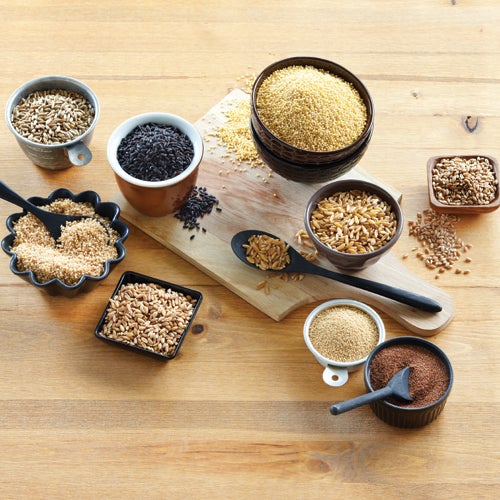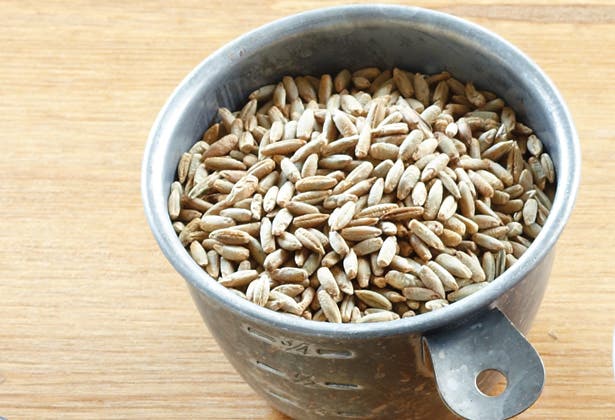Guide to Whole Grains


Freekeh
Origin: Middle East.
Health Benefit: Kernels are harvested while young, so freekeh has a higher concentration of vitamins and minerals than brown rice – and up to four times the fiber.
Use: As rice or pasta substitute or in soups and burger patties.
Try:Roasted Winter Squash Bento Salad

Black Forbidden Rice
Origin: Asia.
Health Benefit: Anthocyanins, powerful antioxidant plant pigments that lend the grain a dark color (careful, it stains easily). Gluten-free.
Use: Flour in baking or cooked grains in side dishes and salads.
Try: Thai Black Rice Salad with Wild Salmon

Millet
Origin: Africa.
Health Benefit: Gluten-free and contains gut-friendly prebiotics.
Use: In baked goods, porridge, formed into patties or cooked as hot cereal.
Try: Millet Patties with Roasted Garlic Aioli
Bulgur
Origin: Mediterranean regions, China and the Middle East.
Health Benefit: Manganese, a trace mineral necessary for bone health.
Use: As a meat substitute or added to pilafs, soups and baked goods.
Try: Coconut Curry Chili

Kamut
Origin: Egypt.
Health Benefit: Selenium, an immune system–supporting trace mineral.
Use: As a flour in baking or add grains to pilaf-style dishes, salads, soups, stews and stir-frys.
Try: Artichoke Chicken Roulades with Mushroom Kamut

Wheat Berries
Origin: No specific origin.
Health Benefit: Lignans, plant nutrients that may help reduce risk of breast cancer.
Use: In salads, hot cereal and baked goods, or sauté with mushrooms for a hearty side.
Try: Carrot-Infused Wheat Berries with Butternut Squash

Farro
Origin: Egypt.
Health Benefit: Cyanogenic glucosides, a carbohydrate that may stabilize blood sugar, lower cholesterol and stimulate the immune system.
Use: Semi-pearled grains in soups, pastas, risottos and casseroles.
Try: Mixed Vegetable Farro Salad

Amaranth
Origin: South America.
Health Benefit: Gluten-free and contains lysine, an amino acid that promotes growth and tissue repair.
Use: In hot cereal, casseroles, baked goods, pancakes, crackers or as a rice substitute.
See alsoShould You Avoid Gluten?

Teff
Origin: Ethiopia.
Health Benefit: Bone-building calcium, gluten-free
Use: In baked goods, soups, stews, hot cereal, porridge and polenta. Traditionally used to make injera, Ethiopia’s signature flatbread.
See also6 Gluten-Free Twists You’ll Love.

Storage
Whole grains contain natural oils, so they can go rancid quickly. Store in an airtight container in a cool, dark place, ideally a pantry or refrigerator, where they will last for 3 to 6 months.